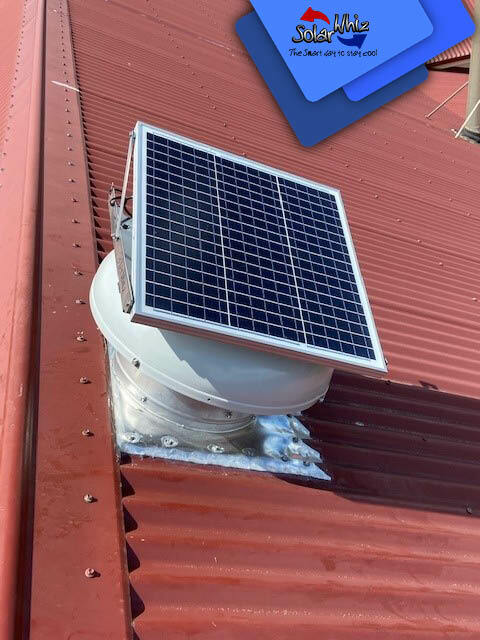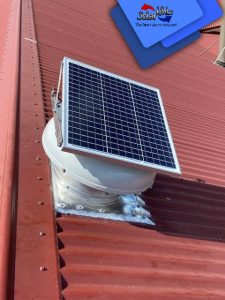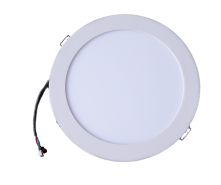Last Updated on June 21, 2025 by Website Manager
Modified Date: August 15, 2024
What are the main differences between whirlybirds and Solar Whiz when it comes to roof ventilation?
Whirlybirds were introduced to the ventilation market in 1910 by Samuel Ewart. While they may have been an innovative invention at the time, whirlybird roof ventilation just doesn’t stand up to market standards in the present day.
We have a more in-depth analysis of whirlybirds that you can read here. To help demonstrate how different whirlybirds and Solar Whiz units are, we’ve made a quick comparison chart:
| Whirlybird roof ventilation | Solar Whiz roof ventilation | |
| Powered by | Wind-energy | Solar-energy |
| Capacity | Approx. 100-150 m³/h in 12 km/h winds (varies according to design) | 1200-2300 Cubic Metres per Hour (m³/h) |
| Temperature or on/off control | No | Yes |
As we’ve discussed previously on the blog, traditional whirlybirds depend largely on the wind to operate and their performance is significantly impacted by a lack of breeze (they do also utilise heat convection; where hot air rises to the ceiling, helping to spin the whirlybird turbines but this effect is minimal). Solar Whiz (AKA solar-powered whirlybirds) operate using solar PV panels that work even in cloudy conditions.
What are the biggest advantages that Solar Whiz roof ventilation has over whirlybirds?
Massive air-flow capacity:
Our expertise in the field of roof ventilation has shown that a small home generally needs a unit with an air capacity of at least 1000 m³/h. Many of our competitors recommend less than this, recommending 4 whirlybirds for a 100m2 home. That’s equal to an air capacity between 400-600m³/h per 100m2 of space AND requires you to purchase at least 4 ventilators!
Our smallest home roof ventilators can extract 1200m³/h of air, equal to about 8-10 whirlybirds. Our largest domestic unit can move 23 times more air than a single whirlybird.
With a far more powerful ventilation system, the heat load on air-conditioning units is greatly reduced. That means that your system doesn’t have to work anywhere near as hard to deliver the same results, saving you money and reducing your emissions.
Operating controls
Solar Whiz roof ventilation systems give you control of when you want your units to operate. To do so we have two installation accessories:
- Thermostats: This is our most popular accessory. By installing a thermostat with your unit you can set the temperature at which ventilation should start, or simply turn it off when you feel like it.
- Day/night packs: This lets you operate the unit at full capacity at night or in overcast conditions. We do this by plugging in a constant current night operation module to mains power using a 24-volt power supply. The system automatically tops up the solar power available with main power as needed to keep the Solar Whiz unit running at its nominated capacity.
Overall, solar powered whirlybirds for roof ventilation such as Solar Whiz are far superior to traditional whirlybirds and other forms of passive ventilation. The harsh Australian climate demands a more proactive approach to keeping cool and well-ventilated; don’t depend on passive forces like wind and heat convection to keep you cool.
Frequently Asked Questions
What is Solar Whiz, and how does it differ from Whirlybirds?
Solar Whiz is a solar-powered roof ventilation system that operates silently and efficiently, unlike Whirlybirds, which require wind to function. Solar Whiz can provide constant ventilation, day or night, and works even on overcast days.
How effective is Solar Whiz compared to Whirlybirds?
Solar Whiz is significantly more effective than Whirlybirds, providing up to 23 times more ventilation. It also has a wider reach, covering a larger area of the roof and providing better ventilation to the attic and the rooms below.
What are the benefits of using Solar Whiz over Whirlybirds?
Solar Whiz offers several advantages over Whirlybirds, including its silent operation, its ability to work day and night, and its superior performance in terms of ventilation. It is also more energy-efficient and cost-effective, as it is powered by solar energy.
Can Solar Whiz be installed in any roof type?
Yes, Solar Whiz can be installed in any roof type, including tile, metal, and Colorbond. It comes in a range of sizes and designs to suit different roof types and configurations, making it a versatile and adaptable solution for any home or building.
How much does a Solar Whiz cost compared to Whirlybirds?
The cost of Solar Whiz is generally higher than Whirlybirds, but the long-term benefits in terms of energy efficiency and superior performance makes it a worthwhile investment. Solar Whiz also requires no ongoing maintenance or running costs, unlike Whirlybirds, which may require repairs or replacement over time.





